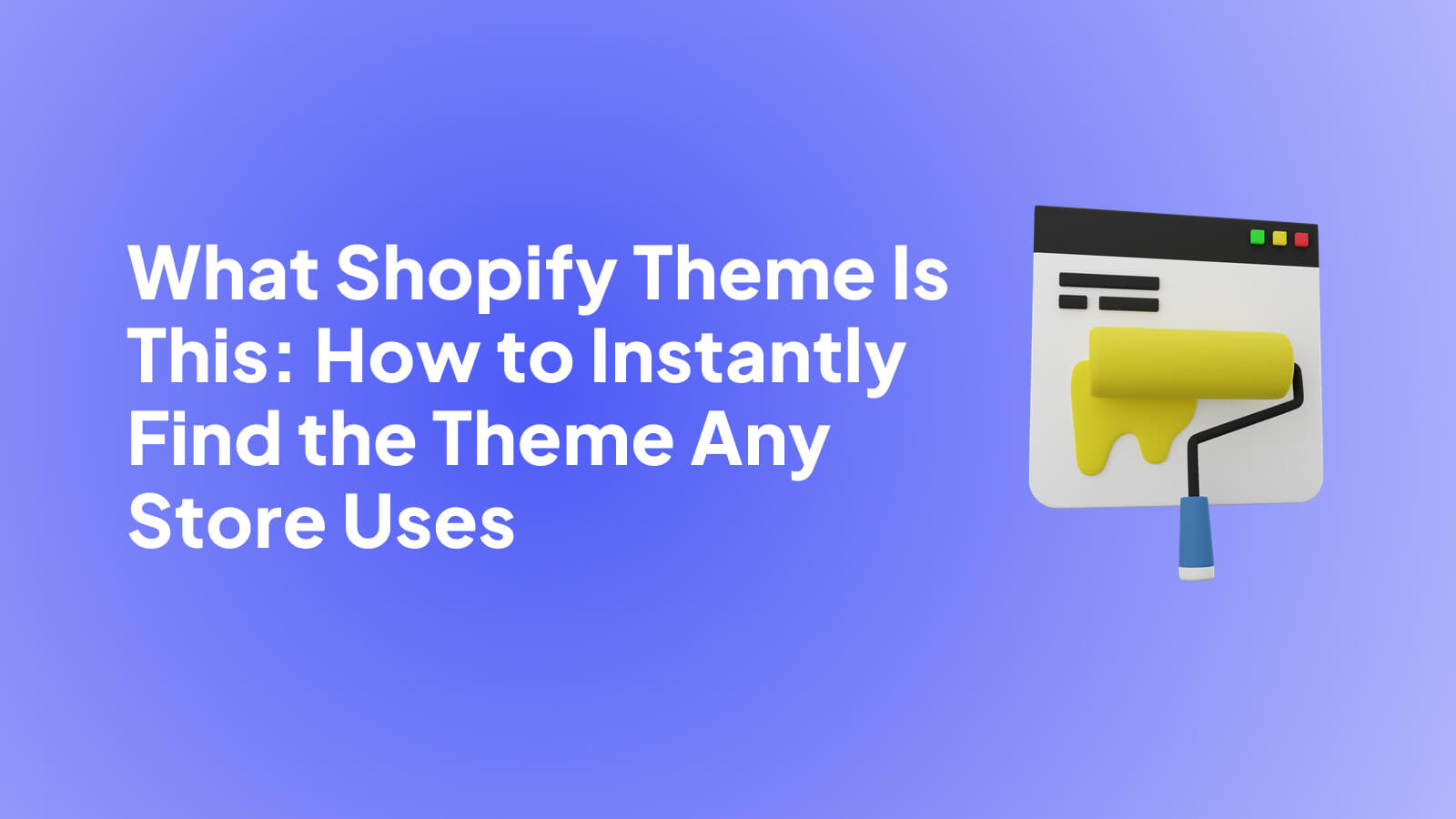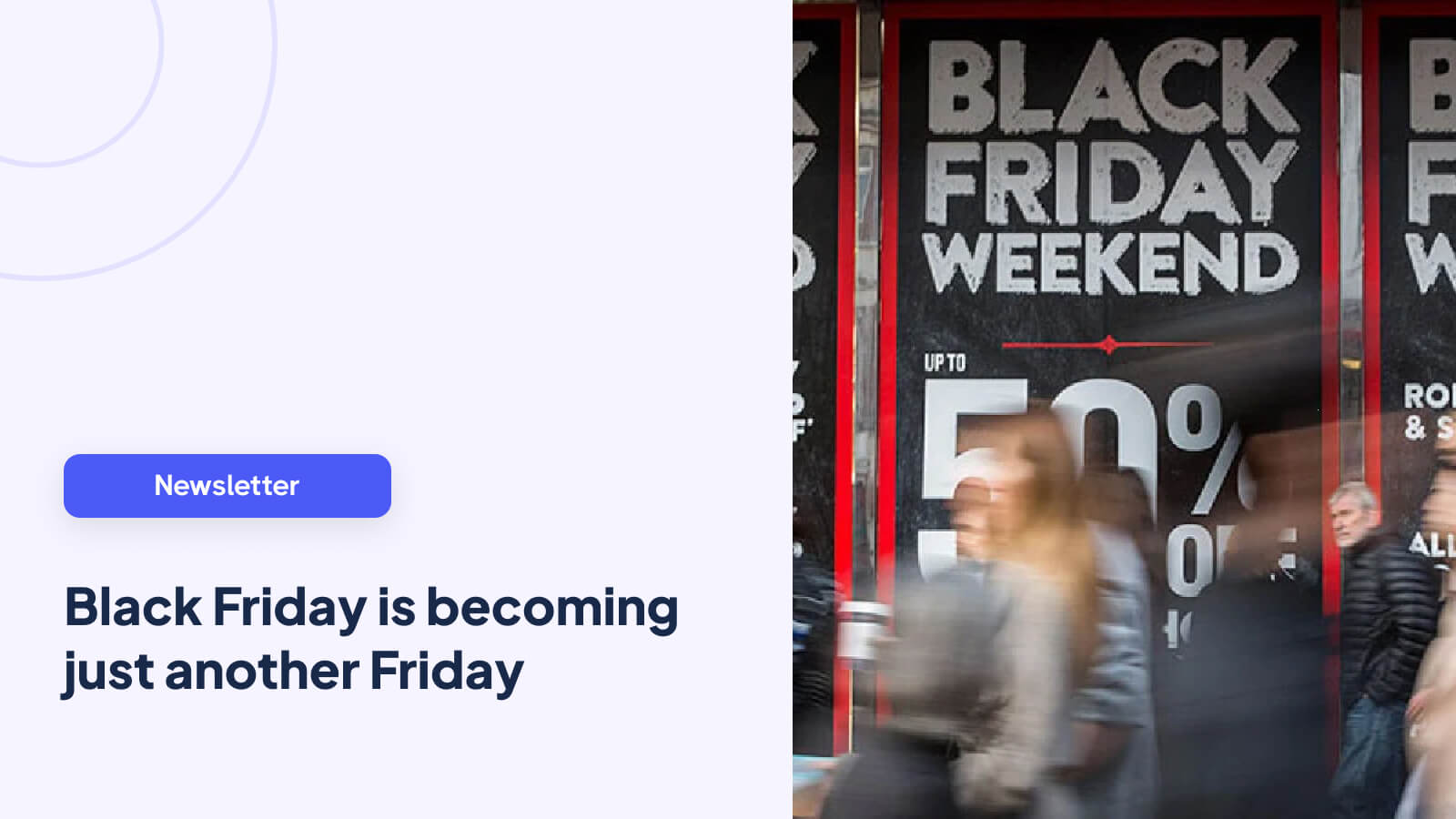
- Beyond the Viral Hit: Deconstructing Video Marketing That Actually Sells
- 1. Dollar Shave Club - Our Blades Are F***ing Great
- 2. Old Spice - The Man Your Man Could Smell Like
- 3. Blendtec - Will It Blend?
- 4. Dove - Real Beauty Sketches
- 5. GoPro User-Generated Adventure Content
- 6. Airbnb - Stories from the Airbnb Community
- 7. Nike - Dream Crazy with Colin Kaepernick
- 8. Zoom - Video Conferencing Success Stories During COVID-19
- Top 8 Video Marketing Campaigns Comparison
- From Inspiration to Implementation: Your DTC Video Playbook
Beyond the Viral Hit: Deconstructing Video Marketing That Actually Sells
In the crowded world of ecommerce, simply having a great product isn't enough. Video marketing has become the cornerstone of brand storytelling and customer connection. For many DTC merchants, however, creating video content can be intimidating, often associated with massive budgets and viral-or-bust campaigns.
The truth is, effective video marketing isn't about chasing a one-in-a-million viral hit; it's about strategy, authenticity, and understanding what resonates with your audience. The most successful brands don't just make ads; they create experiences, build communities, and solve problems through video.
This article moves beyond surface-level praise to deconstruct eight legendary examples of video marketing. We'll dissect the strategic thinking behind each campaign, extract replicable tactics, and provide actionable takeaways specifically for DTC brands. To gain more insights from different campaign types, you can also explore successful influencer marketing campaign examples for additional strategic inspiration.
Finally, we will focus on how these foundational strategies can be adapted for today’s most powerful formats, like the shoppable videos you can add to your Shopify store. This approach turns inspiration directly into sales, connecting powerful storytelling with immediate purchasing opportunities.
1. Dollar Shave Club - Our Blades Are F***ing Great
No list of transformative examples of video marketing is complete without Dollar Shave Club's 2012 launch video. This 90-second masterpiece didn't just sell razors; it built an entire brand identity overnight. The video features founder Michael Dubin walking through his warehouse, delivering a deadpan, hilarious, and brutally honest monologue about the absurdity of expensive razor cartridges. It was a direct-to-camera pitch that eschewed high-gloss production for raw personality and a razor-sharp value proposition.
The strategy was revolutionary for its time. Instead of focusing on technical features, Dubin focused on a shared customer pain point: overpaying for brand-name razors. By combining relatable humor with a clear, simple solution, the video went viral, attracting 12,000 new customers in its first 48 hours. It proved that authenticity could be a more powerful marketing tool than a multi-million-dollar budget. The following bar chart visualizes the staggering return on investment, comparing the minimal production cost to the massive initial customer acquisition and view count.
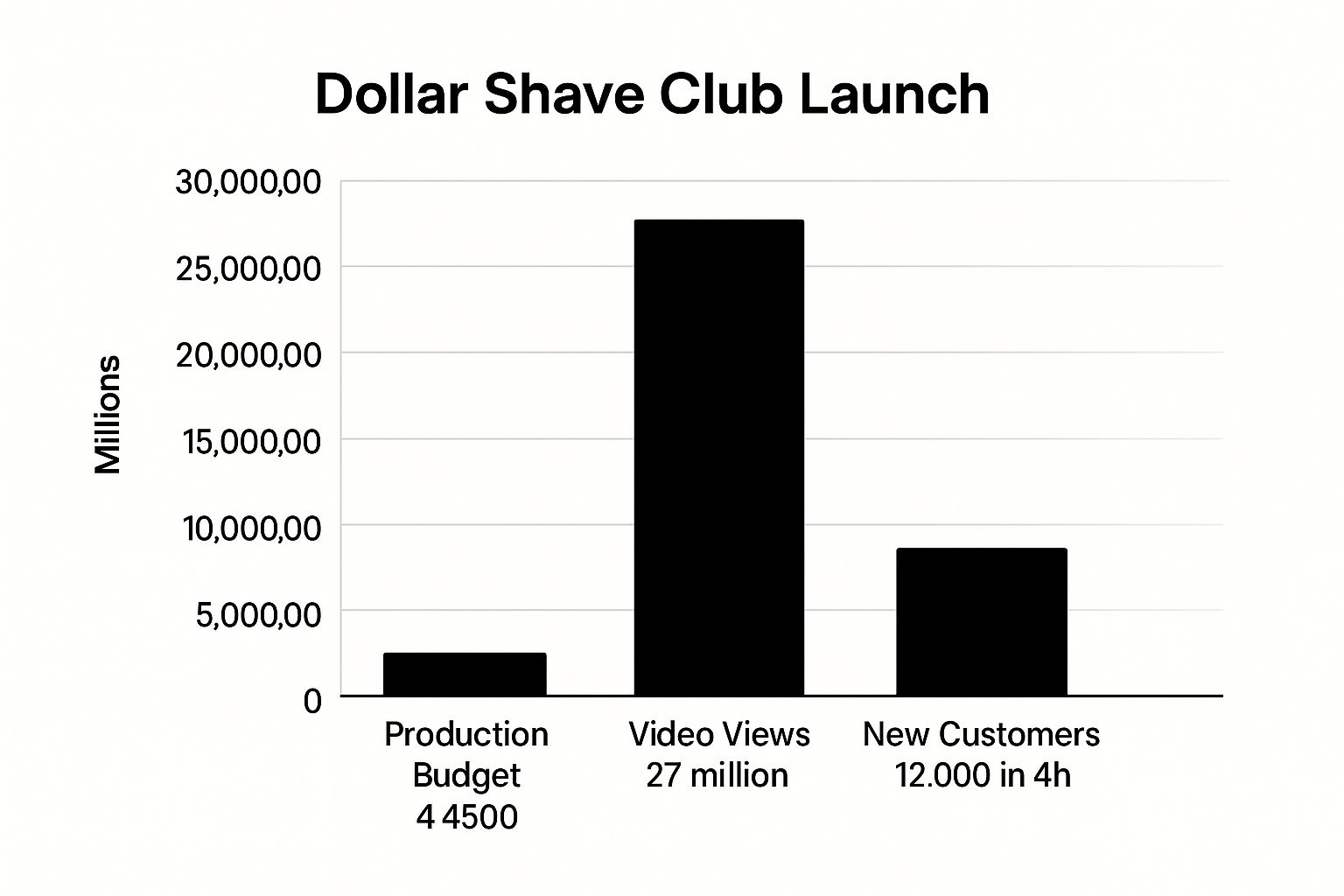
The chart clearly illustrates how a tiny budget, when paired with a brilliant creative concept, can generate results that rival massive advertising campaigns.
Strategic Breakdown & Key Takeaways
For DTC merchants, this video is a masterclass in launching a brand and disrupting an industry.
- Authenticity Over Polish: The video’s low-fi, single-take feel made the message more believable. Customers connect with real people and personalities, not just faceless corporations.
- Focus on a Singular Message: The video hammered home one point: "Stop paying for shave tech you don't need." Avoid cluttering your video with too many features or benefits. Isolate the most compelling part of your offer and build your script around it.
- Use Humor as a Weapon: The "f***ing great" line was memorable and shareable. If it aligns with your brand, strategic humor can cut through the noise and make your message stick.
- Include a Strong CTA: The video ends by clearly stating the website: DollarShaveClub.com. Tell your audience exactly what to do next. This approach is ideal for new product launches or for brands entering a crowded market where a unique personality is the primary differentiator.
2. Old Spice - The Man Your Man Could Smell Like
In 2010, Old Spice completely reinvented its image from a grandfather's aftershave to a modern cultural icon with "The Man Your Man Could Smell Like." This ad campaign, starring Isaiah Mustafa, used a single, continuous take filled with surreal humor and rapid scene changes to speak directly to its target audience. The video's flawless execution and confident, witty script turned a 30-second spot into one of the most memorable examples of video marketing ever created.
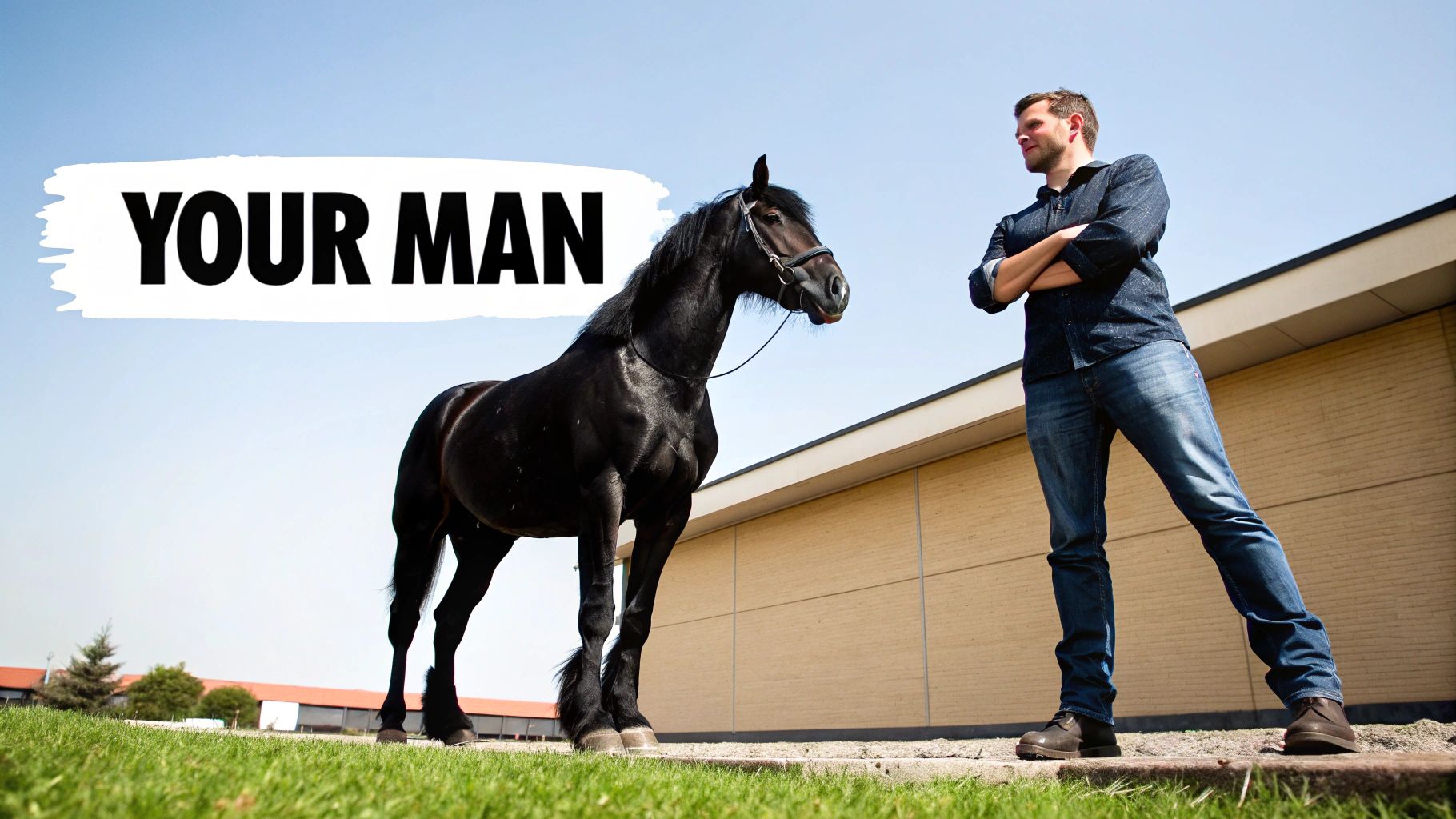
The strategy was a masterstroke in audience awareness. Instead of targeting men, the ad directly addressed "ladies," acknowledging that women often make purchasing decisions for household toiletries. This shift in focus, combined with the video's viral appeal, led to a 107% increase in body wash sales and a 300% surge in website traffic. Old Spice extended the campaign by creating nearly 200 personalized video responses to fans on social media, cementing its status as a brand that listens and engages.
Strategic Breakdown & Key Takeaways
For DTC brands, this campaign is a powerful lesson in how to reboot an image and create a cultural moment.
- Commit Fully to Your Creative Concept: The campaign’s single-take, absurdist style was a high-risk, high-reward choice. Don’t be afraid to embrace a bold creative vision. A well-executed, unique concept is far more memorable than a safe, generic ad.
- Target the Purchaser, Not Just the User: The "Hello, ladies" opening line was deliberate. Old Spice identified the real buyer and tailored its message directly to them. Analyze your customer data to understand who is actually clicking "buy" and speak their language.
- Plan for Campaign Extensions: The initial ad was the spark, but the personalized video responses fanned the flames. This created a two-way conversation that deepened engagement. Think beyond the initial video and brainstorm ways to keep the momentum going.
- Balance Entertainment with a Brand Message: The video was incredibly entertaining, but it never lost sight of the goal. The product is the hero, and the final shot is a clear call to action. Ensure your creative content serves your core business objective. This approach is ideal for brands needing a refresh or those looking to capture a new audience in a crowded market.
3. Blendtec - Will It Blend?
One of the earliest and most enduring examples of video marketing that proved the power of a content series is Blendtec's "Will It Blend?". This brilliantly simple campaign features founder Tom Dickson, clad in a lab coat, attempting to pulverize a wide array of non-food items, from iPhones and golf balls to glow sticks. The premise was straightforward: demonstrate the sheer power and durability of a Blendtec blender by subjecting it to the ultimate, absurd tests. It transformed a potentially dry product demo into must-see content.

The strategy tapped into pure, unadulterated curiosity. By posing a simple question in the title, Blendtec created a viral loop that fueled millions of views and international media attention. The results were staggering, with reports of a 700% increase in blender sales directly attributed to the series. The campaign showed that you don't need a massive budget or complex narrative to dominate a niche; you need a creative, repeatable format that delivers a clear message in an entertaining way. The video of the iPhone blending remains a viral marketing benchmark.
Strategic Breakdown & Key Takeaways
For any e-commerce brand with a durable or high-performance product, this series is a blueprint for creating endlessly shareable content that directly translates to sales.
- Turn a Demo into a Spectacle: Instead of listing horsepower or blade RPM, Blendtec showed it. Blending a rake is infinitely more persuasive and memorable than any spec sheet. Find your product's core strength and demonstrate it in an extreme, visual way.
- Build a Repeatable Format: The "Will It Blend?" structure is consistent: introduction, blending, and the aftermath. This consistency makes production efficient and trains the audience on what to expect, encouraging them to subscribe for the next installment.
- Leverage Curiosity as a Hook: Every video title poses a question that viewers feel compelled to see answered. Frame your content around a question or a challenge to maximize engagement and click-through rates.
- Keep Production Lean and Focused: The videos were not cinematic masterpieces. They were shot in a simple setting with a clear focus on the action. This proves that a powerful concept is far more important than high production value. This approach is ideal for demonstrating product quality, durability, or a core feature in a tangible and entertaining format that builds long-term brand affinity.
4. Dove - Real Beauty Sketches
Dove’s "Real Beauty Sketches" is one of the most powerful and successful examples of video marketing that focused on emotion over product. The 2013 campaign was a social experiment where a forensic artist drew portraits of women based on their own self-descriptions, then drew a second portrait based on a stranger's description. The poignant reveal showed that the portraits described by strangers were consistently more beautiful and accurate, highlighting a universal truth about harsh self-perception.
The strategy was to build profound brand equity by connecting Dove with the deeply personal and emotional topic of self-esteem. Instead of showcasing soap, Dove championed a cause. The video exploded online, becoming the most-watched video ad of all time shortly after its release, garnering over 180 million views, earning a Cannes Lions Grand Prix, and sparking a global conversation about beauty standards. It was a masterclass in top-of-funnel marketing, creating massive brand affinity and positive sentiment that paid dividends for years.
This campaign demonstrated that a brand could lead a cultural conversation. By shifting the focus from the product to the consumer's emotional world, Dove created a piece of content that people shared not to advertise a product, but to share a meaningful idea.
Strategic Breakdown & Key Takeaways
For brands looking to build a lasting emotional connection with their audience, the "Real Beauty Sketches" campaign is an essential case study.
- Focus on a Universal Human Truth: The video's power comes from its central, relatable insight: we are our own worst critics. Identify a core human experience your audience shares and build your narrative around that truth for a deeply resonant message.
- Authenticity Through Real People: Using a real forensic artist and real women, not actors, made the emotional reactions genuine and the experiment’s conclusion undeniable. This approach builds trust and makes the message far more impactful.
- Prioritize Message Over Product: The Dove logo only appears at the very end. The video is focused entirely on its social message, which in turn elevates the brand's purpose. Sometimes the best way to sell is to not sell at all.
- Plan for an Emotional Response: This campaign was designed to be emotional and shareable. This type of high-concept storytelling requires careful planning and a deep understanding of your audience. Crafting such a narrative is a core component of advanced ecommerce video production. This approach is ideal for established brands seeking to deepen their market position or for new brands that want to build an identity around a strong social mission.
5. GoPro User-Generated Adventure Content
GoPro mastered a strategy that turned its entire customer base into a content creation engine. Instead of focusing its marketing on the camera's technical specs, GoPro built its brand by showcasing the incredible, authentic experiences users captured with its products. From a fireman saving a kitten (a video with over 42 million views) to Felix Baumgartner's record-breaking space jump, GoPro demonstrated that the most powerful marketing sells an aspirational lifestyle, not just a piece of hardware. This approach transformed customers into brand advocates and content creators.
This user-generated content (UGC) model created an endless and cost-effective marketing flywheel. By encouraging, curating, and celebrating user submissions, GoPro built a massive library of compelling, high-energy videos for a fraction of what traditional production would cost. This is one of the most effective examples of video marketing because it fosters a genuine community and builds immense brand loyalty. GoPro's social channels became a destination for thrilling content, establishing a direct relationship with millions of fans and potential customers. For a deeper look at this strategy, you can explore how other top brands are crushing the UGC game.
Strategic Breakdown & Key Takeaways
For DTC merchants with products that enable experiences, this is a blueprint for building a community-powered brand.
- Incentivize and Empower Creators: Don’t just ask for content; create a structured program like the GoPro Awards. Offer rewards, recognition, and clear submission guidelines to motivate your community to create high-quality content for you.
- Showcase Product Versatility: While GoPro is synonymous with extreme sports, its most viral content often highlights emotional or unexpected moments. Use UGC to demonstrate the full range of how customers can integrate your product into their lives, broadening your appeal.
- Credit and Celebrate Your Community: Always give prominent credit to the original creator. Featuring, tagging, and engaging with their posts makes them feel valued and encourages others to contribute. This turns your marketing channel into a community hub.
- Provide Tools to Lower Barriers: GoPro’s Quik editing app helps users create polished videos easily. By providing resources, you improve the quality of submissions and make it easier for more people to participate. This approach is ideal for brands whose products have a strong visual or lifestyle component.
6. Airbnb - Stories from the Airbnb Community
Another powerful set of examples of video marketing comes from Airbnb’s long-running "Stories from the Airbnb Community" series. Rather than marketing rooms, Airbnb markets the human connection and sense of belonging that travel enables. These short, documentary-style videos feature authentic stories from real hosts and guests, transforming the brand from a transactional booking platform into a global community. Videos like the "Wall and Chain" story, which recounts a German host's connection to the Berlin Wall, focus entirely on emotion and shared humanity.
This strategy is brilliant because it directly addresses the core anxieties of the service: trust and safety. By putting real people and their heartfelt experiences front and center, Airbnb builds immense credibility and emotional resonance. These stories don't sell a bed for the night; they sell the promise of an authentic, meaningful travel experience. The high-quality, cinematic production elevates these personal accounts, making them feel both intimate and epic, and effectively builds a brand narrative centered on trust, diversity, and cultural exchange.
Strategic Breakdown & Key Takeaways
For brands selling experiences or building a community, this strategy is a masterclass in emotional marketing and brand building.
- Lead with Human Connection: Don't just list product features; showcase the human impact. Feature genuine stories from your customers, showing how your product fits into their lives. People connect with authentic narratives, not just corporate messaging.
- Invest in Cinematic Storytelling: Authenticity doesn't have to mean low-fi. Airbnb’s videos are beautifully produced, which shows respect for the stories and the audience. Quality production enhances the emotional weight and signals that you are a quality brand.
- Build a Content Series: A single great video is an asset, but a consistent series becomes a core part of your brand identity. Creating an ongoing series keeps your audience engaged and builds a valuable library of social proof and brand lore.
- Show, Don't Just Tell, Your Values: Airbnb used its platform to launch campaigns like "Acceptance" to tackle difficult topics and reinforce its commitment to inclusion. Use video to demonstrate your brand values in action, which builds deep loyalty with consumers who share them. This approach is ideal for brands aiming to build a strong community and differentiate on values rather than just price or features.
7. Nike - Dream Crazy with Colin Kaepernick
Nike's "Dream Crazy" campaign is a masterclass in purpose-driven marketing that transcends simple product promotion. The two-minute video, narrated by athlete and activist Colin Kaepernick, features a montage of athletes overcoming immense adversity. It culminates in the powerful and controversial tagline, "Believe in something, even if it means sacrificing everything." This was not just an ad; it was a bold cultural statement that ignited a national conversation.
The strategy was a calculated risk. By aligning with a polarizing figure, Nike chose to connect with its core demographic of younger, socially-conscious consumers at the risk of alienating others. The initial backlash was swift, with calls for boycotts and a temporary dip in stock price. However, the move ultimately paid off spectacularly, generating an estimated $6 billion in brand value and a 31% boost in online sales. This is one of the most powerful examples of video marketing because it demonstrates how aligning with strong values can build unshakable brand loyalty and drive massive commercial success.
Strategic Breakdown & Key Takeaways
For DTC brands looking to build a deep, emotional connection with their audience, this campaign is a high-stakes playbook for taking a stand.
- Align with Core Brand Values: Nike has a long history of celebrating defiant, determined athletes. The "Dream Crazy" message was powerful because it was a genuine extension of Nike's established brand identity. Any stance your brand takes must feel authentic to its mission.
- Deeply Understand Your Core Audience: Nike knew that its primary customers would champion the message. Instead of trying to please everyone, they focused on energizing their most loyal supporters, turning customers into advocates.
- Prepare for Controversy: Taking a polarizing stance will generate opposition. Nike anticipated the negative press and was prepared to weather the initial storm. This approach is a powerful form of advocacy marketing that can forge strong community ties, but it requires a solid communication plan.
- Commit Fully to Your Message: The campaign's effectiveness stemmed from Nike's unwavering conviction. A hesitant or watered-down message would have failed. If your brand takes a stand, it must stand firm. This values-first approach is ideal for established brands that understand their audience and can withstand short-term turbulence for long-term loyalty.
8. Zoom - Video Conferencing Success Stories During COVID-19
Zoom’s campaign during the COVID-19 pandemic is a powerful example of video marketing driven by empathy. As the world went into lockdown, Zoom highlighted how its platform kept people connected through real stories of virtual weddings, graduations, and family reunions. This wasn't a campaign about features; it was a testament to human resilience, with Zoom as the facilitator.
The strategy positioned Zoom as a vital utility for human connection, not just a business tool. By amplifying authentic user stories, the brand became a symbol of togetherness during a crisis. This approach generated immense goodwill and loyalty, proving that showcasing real-world impact can be the most effective marketing message.
A chart visualizing brand sentiment during this period would show a meteoric rise in positive mentions. This data would directly correlate with these customer-centric stories, demonstrating how empathetic marketing builds tangible brand equity.
Strategic Breakdown & Key Takeaways
For merchants, Zoom's campaign is a masterclass in building community and demonstrating value during pivotal moments.
- Be Sensitive to Timing and Context: Zoom succeeded by understanding the global mood. They provided content that was hopeful, not opportunistic. Always assess the cultural climate to ensure your message is resonant, not tone-deaf.
- Focus on Human Connection: The product was the stage; the users were the stars. Making customers the heroes built an emotional bond with the audience. Center your marketing on the people you serve, not just your product.
- Show, Don't Just Tell Product Benefits: Rather than listing features, Zoom showed a grandfather meeting his grandchild. These narratives function as emotional video case studies. Show your product solving a real human problem.
- Create Content That Provides Value: The videos offered a sense of shared experience and hope. Your content should give something back to the viewer, strengthening their relationship with your brand. This approach is perfect for building long-term brand affinity.
Top 8 Video Marketing Campaigns Comparison
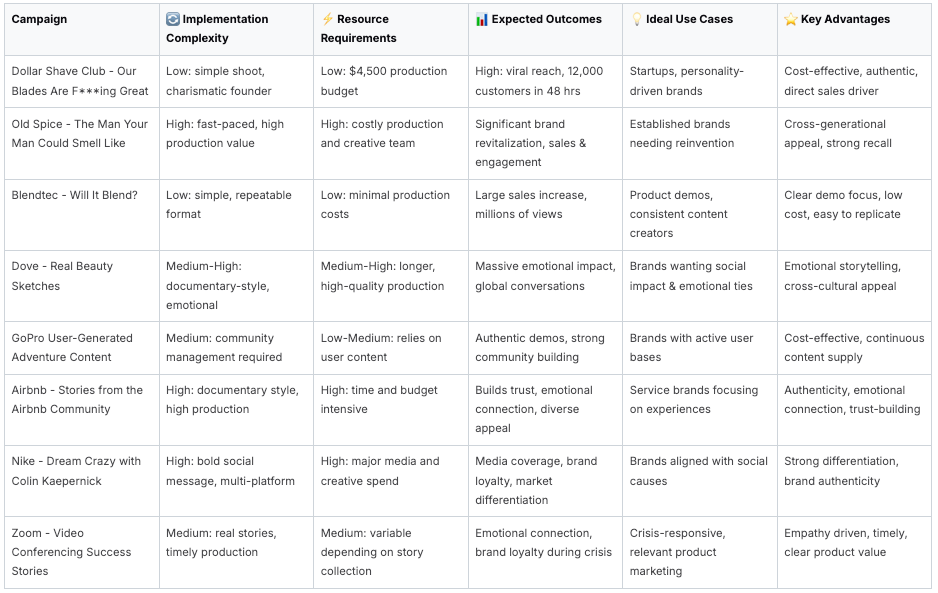
From Inspiration to Implementation: Your DTC Video Playbook
The journey through these iconic examples of video marketing reveals a powerful, unifying truth. From the disruptive humor of Dollar Shave Club to the raw emotion of Dove's "Real Beauty Sketches," the most effective videos prioritize human connection over a hard sell. They understand that modern commerce isn't just about transactions; it's about building a brand that people trust, relate to, and want to be a part of.
For DTC merchants on platforms like Shopify, the lesson is liberating. You do not need a Super Bowl-sized budget or a Hollywood production crew. Your greatest asset is your unique story, your direct relationship with your customers, and your authentic passion for your products. The strategies that powered these giants are now more accessible than ever.
Key Strategic Threads from Today's Top Examples
Analyzing these diverse campaigns uncovers a playbook that any brand can adapt. The core principles for success are not hidden behind massive budgets but are rooted in strategic fundamentals.
- Authenticity Over Polish: Blendtec's raw, unscripted "Will It Blend?" series and GoPro's user-generated content (UGC) prove that a genuine, low-fi approach can build immense trust and virality. Customers connect with real people and real product demonstrations.
- Community as a Content Engine: GoPro and Airbnb built empires by turning their customers into storytellers. They created a platform for users to share their experiences, generating a limitless supply of authentic marketing content that resonates far more than a corporate message.
- Mission-Driven Narratives: Nike and Dove didn't just sell products; they sold a belief system. By taking a stand and aligning their brand with a powerful social message, they fostered deep emotional loyalty and created a cultural movement around their brand.
- Problem and Solution Storytelling: At their core, Dollar Shave Club and Zoom succeeded by clearly identifying a common customer pain point and presenting their product as the simple, elegant solution. This direct, value-first approach builds instant rapport.
Your Actionable Roadmap for Video Success
Moving from inspiration to execution requires a clear plan. Instead of trying to do everything at once, focus on a few core steps to build a powerful video marketing foundation.
- Identify Your Core Story: Start by defining your brand's narrative. Are you a founder-led brand with a unique origin story like Blendtec? A community-focused brand like GoPro? Or a mission-driven brand like Dove? Your core story will dictate your video style.
- Choose Your Entry-Point Format: Don't aim for a "Dream Crazy" campaign on day one. Start small with high-impact, low-cost formats. This could be founder-led product demos, customer testimonial compilations, or repurposed TikToks and Instagram Reels.
- Lead with Value, Not a Sale: Your primary goal is to educate, entertain, or inspire. Whether you are showing five creative ways to use your product or sharing a powerful customer story, provide value first. The sale will follow the trust you build.
- Close the Conversion Loop: The biggest mistake brands make is creating great video content that lives disconnected from the point of purchase. The final, critical step is to make your videos directly shoppable on your site, eliminating friction between inspiration and checkout.
The most impactful examples of video marketing masterfully convert viewer attention into brand loyalty and, ultimately, sales. The key is to embed your most engaging content, from TikToks to detailed tutorials, directly onto your Shopify product and collection pages. This transforms passive viewing into an active shopping experience, allowing customers to add products to their cart the moment they feel inspired. This strategy turns every video view into a potential revenue driver for your DTC business.
Ready to turn your best video content into your top salesperson? With Moast, you can easily add shoppable videos to your Shopify store in minutes, bridging the gap between engagement and conversion. Transform your product pages into dynamic, high-converting experiences and let your customers shop directly from the content they love.
Related content
Turn your videos into sales
Boost conversions by up to 30% by turning your existing TikToks and Reels into shoppable videos directly on your Shopify store.




